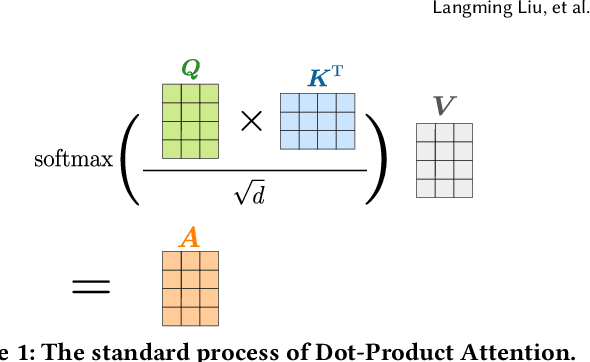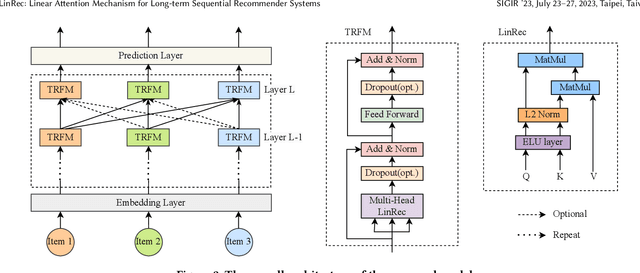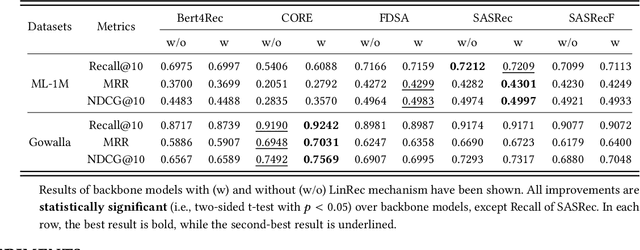Yiqi Wang
Latent Policy Steering with Embodiment-Agnostic Pretrained World Models
Jul 17, 2025Abstract:Learning visuomotor policies via imitation has proven effective across a wide range of robotic domains. However, the performance of these policies is heavily dependent on the number of training demonstrations, which requires expensive data collection in the real world. In this work, we aim to reduce data collection efforts when learning visuomotor robot policies by leveraging existing or cost-effective data from a wide range of embodiments, such as public robot datasets and the datasets of humans playing with objects (human data from play). Our approach leverages two key insights. First, we use optic flow as an embodiment-agnostic action representation to train a World Model (WM) across multi-embodiment datasets, and finetune it on a small amount of robot data from the target embodiment. Second, we develop a method, Latent Policy Steering (LPS), to improve the output of a behavior-cloned policy by searching in the latent space of the WM for better action sequences. In real world experiments, we observe significant improvements in the performance of policies trained with a small amount of data (over 50% relative improvement with 30 demonstrations and over 20% relative improvement with 50 demonstrations) by combining the policy with a WM pretrained on two thousand episodes sampled from the existing Open X-embodiment dataset across different robots or a cost-effective human dataset from play.
Measure Domain's Gap: A Similar Domain Selection Principle for Multi-Domain Recommendation
May 26, 2025Abstract:Multi-Domain Recommendation (MDR) achieves the desirable recommendation performance by effectively utilizing the transfer information across different domains. Despite the great success, most existing MDR methods adopt a single structure to transfer complex domain-shared knowledge. However, the beneficial transferring information should vary across different domains. When there is knowledge conflict between domains or a domain is of poor quality, unselectively leveraging information from all domains will lead to a serious Negative Transfer Problem (NTP). Therefore, how to effectively model the complex transfer relationships between domains to avoid NTP is still a direction worth exploring. To address these issues, we propose a simple and dynamic Similar Domain Selection Principle (SDSP) for multi-domain recommendation in this paper. SDSP presents the initial exploration of selecting suitable domain knowledge for each domain to alleviate NTP. Specifically, we propose a novel prototype-based domain distance measure to effectively model the complexity relationship between domains. Thereafter, the proposed SDSP can dynamically find similar domains for each domain based on the supervised signals of the domain metrics and the unsupervised distance measure from the learned domain prototype. We emphasize that SDSP is a lightweight method that can be incorporated with existing MDR methods for better performance while not introducing excessive time overheads. To the best of our knowledge, it is the first solution that can explicitly measure domain-level gaps and dynamically select appropriate domains in the MDR field. Extensive experiments on three datasets demonstrate the effectiveness of our proposed method.
Mixture of Experts for Node Classification
Nov 30, 2024Abstract:Nodes in the real-world graphs exhibit diverse patterns in numerous aspects, such as degree and homophily. However, most existent node predictors fail to capture a wide range of node patterns or to make predictions based on distinct node patterns, resulting in unsatisfactory classification performance. In this paper, we reveal that different node predictors are good at handling nodes with specific patterns and only apply one node predictor uniformly could lead to suboptimal result. To mitigate this gap, we propose a mixture of experts framework, MoE-NP, for node classification. Specifically, MoE-NP combines a mixture of node predictors and strategically selects models based on node patterns. Experimental results from a range of real-world datasets demonstrate significant performance improvements from MoE-NP.
Efficient and Robust Regularized Federated Recommendation
Nov 03, 2024



Abstract:Recommender systems play a pivotal role across practical scenarios, showcasing remarkable capabilities in user preference modeling. However, the centralized learning paradigm predominantly used raises serious privacy concerns. The federated recommender system (FedRS) addresses this by updating models on clients, while a central server orchestrates training without accessing private data. Existing FedRS approaches, however, face unresolved challenges, including non-convex optimization, vulnerability, potential privacy leakage risk, and communication inefficiency. This paper addresses these challenges by reformulating the federated recommendation problem as a convex optimization issue, ensuring convergence to the global optimum. Based on this, we devise a novel method, RFRec, to tackle this optimization problem efficiently. In addition, we propose RFRecF, a highly efficient version that incorporates non-uniform stochastic gradient descent to improve communication efficiency. In user preference modeling, both methods learn local and global models, collaboratively learning users' common and personalized interests under the federated learning setting. Moreover, both methods significantly enhance communication efficiency, robustness, and privacy protection, with theoretical support. Comprehensive evaluations on four benchmark datasets demonstrate RFRec and RFRecF's superior performance compared to diverse baselines.
LinRec: Linear Attention Mechanism for Long-term Sequential Recommender Systems
Nov 03, 2024



Abstract:Transformer models have achieved remarkable success in sequential recommender systems (SRSs). However, computing the attention matrix in traditional dot-product attention mechanisms results in a quadratic complexity with sequence lengths, leading to high computational costs for long-term sequential recommendation. Motivated by the above observation, we propose a novel L2-Normalized Linear Attention for the Transformer-based Sequential Recommender Systems (LinRec), which theoretically improves efficiency while preserving the learning capabilities of the traditional dot-product attention. Specifically, by thoroughly examining the equivalence conditions of efficient attention mechanisms, we show that LinRec possesses linear complexity while preserving the property of attention mechanisms. In addition, we reveal its latent efficiency properties by interpreting the proposed LinRec mechanism through a statistical lens. Extensive experiments are conducted based on two public benchmark datasets, demonstrating that the combination of LinRec and Transformer models achieves comparable or even superior performance than state-of-the-art Transformer-based SRS models while significantly improving time and memory efficiency.
Dual Test-time Training for Out-of-distribution Recommender System
Jul 22, 2024Abstract:Deep learning has been widely applied in recommender systems, which has achieved revolutionary progress recently. However, most existing learning-based methods assume that the user and item distributions remain unchanged between the training phase and the test phase. However, the distribution of user and item features can naturally shift in real-world scenarios, potentially resulting in a substantial decrease in recommendation performance. This phenomenon can be formulated as an Out-Of-Distribution (OOD) recommendation problem. To address this challenge, we propose a novel Dual Test-Time-Training framework for OOD Recommendation, termed DT3OR. In DT3OR, we incorporate a model adaptation mechanism during the test-time phase to carefully update the recommendation model, allowing the model to specially adapt to the shifting user and item features. To be specific, we propose a self-distillation task and a contrastive task to assist the model learning both the user's invariant interest preferences and the variant user/item characteristics during the test-time phase, thus facilitating a smooth adaptation to the shifting features. Furthermore, we provide theoretical analysis to support the rationale behind our dual test-time training framework. To the best of our knowledge, this paper is the first work to address OOD recommendation via a test-time-training strategy. We conduct experiments on three datasets with various backbones. Comprehensive experimental results have demonstrated the effectiveness of DT3OR compared to other state-of-the-art baselines.
Determining Domain of Machine Learning Models using Kernel Density Estimates: Applications in Materials Property Prediction
May 28, 2024



Abstract:Knowledge of the domain of applicability of a machine learning model is essential to ensuring accurate and reliable model predictions. In this work, we develop a new approach of assessing model domain and demonstrate that our approach provides accurate and meaningful designation of in-domain versus out-of-domain when applied across multiple model types and material property data sets. Our approach assesses the distance between a test and training data point in feature space by using kernel density estimation and shows that this distance provides an effective tool for domain determination. We show that chemical groups considered unrelated based on established chemical knowledge exhibit significant dissimilarities by our measure. We also show that high measures of dissimilarity are associated with poor model performance (i.e., high residual magnitudes) and poor estimates of model uncertainty (i.e., unreliable uncertainty estimation). Automated tools are provided to enable researchers to establish acceptable dissimilarity thresholds to identify whether new predictions of their own machine learning models are in-domain versus out-of-domain.
Test-Time Training on Graphs with Large Language Models
Apr 21, 2024



Abstract:Graph Neural Networks have demonstrated great success in various fields of multimedia. However, the distribution shift between the training and test data challenges the effectiveness of GNNs. To mitigate this challenge, Test-Time Training (TTT) has been proposed as a promising approach. Traditional TTT methods require a demanding unsupervised training strategy to capture the information from test to benefit the main task. Inspired by the great annotation ability of Large Language Models (LLMs) on Text-Attributed Graphs (TAGs), we propose to enhance the test-time training on graphs with LLMs as annotators. In this paper, we design a novel Test-Time Training pipeline, LLMTTT, which conducts the test-time adaptation under the annotations by LLMs on a carefully-selected node set. Specifically, LLMTTT introduces a hybrid active node selection strategy that considers not only node diversity and representativeness, but also prediction signals from the pre-trained model. Given annotations from LLMs, a two-stage training strategy is designed to tailor the test-time model with the limited and noisy labels. A theoretical analysis ensures the validity of our method and extensive experiments demonstrate that the proposed LLMTTT can achieve a significant performance improvement compared to existing Out-of-Distribution (OOD) generalization methods.
BiVRec: Bidirectional View-based Multimodal Sequential Recommendation
Mar 05, 2024



Abstract:The integration of multimodal information into sequential recommender systems has attracted significant attention in recent research. In the initial stages of multimodal sequential recommendation models, the mainstream paradigm was ID-dominant recommendations, wherein multimodal information was fused as side information. However, due to their limitations in terms of transferability and information intrusion, another paradigm emerged, wherein multimodal features were employed directly for recommendation, enabling recommendation across datasets. Nonetheless, it overlooked user ID information, resulting in low information utilization and high training costs. To this end, we propose an innovative framework, BivRec, that jointly trains the recommendation tasks in both ID and multimodal views, leveraging their synergistic relationship to enhance recommendation performance bidirectionally. To tackle the information heterogeneity issue, we first construct structured user interest representations and then learn the synergistic relationship between them. Specifically, BivRec comprises three modules: Multi-scale Interest Embedding, comprehensively modeling user interests by expanding user interaction sequences with multi-scale patching; Intra-View Interest Decomposition, constructing highly structured interest representations using carefully designed Gaussian attention and Cluster attention; and Cross-View Interest Learning, learning the synergistic relationship between the two recommendation views through coarse-grained overall semantic similarity and fine-grained interest allocation similarity BiVRec achieves state-of-the-art performance on five datasets and showcases various practical advantages.
InfiMM-HD: A Leap Forward in High-Resolution Multimodal Understanding
Mar 03, 2024Abstract:Multimodal Large Language Models (MLLMs) have experienced significant advancements recently. Nevertheless, challenges persist in the accurate recognition and comprehension of intricate details within high-resolution images. Despite being indispensable for the development of robust MLLMs, this area remains underinvestigated. To tackle this challenge, our work introduces InfiMM-HD, a novel architecture specifically designed for processing images of different resolutions with low computational overhead. This innovation facilitates the enlargement of MLLMs to higher-resolution capabilities. InfiMM-HD incorporates a cross-attention module and visual windows to reduce computation costs. By integrating this architectural design with a four-stage training pipeline, our model attains improved visual perception efficiently and cost-effectively. Empirical study underscores the robustness and effectiveness of InfiMM-HD, opening new avenues for exploration in related areas. Codes and models can be found at https://huggingface.co/Infi-MM/infimm-hd
 Add to Chrome
Add to Chrome Add to Firefox
Add to Firefox Add to Edge
Add to Edge